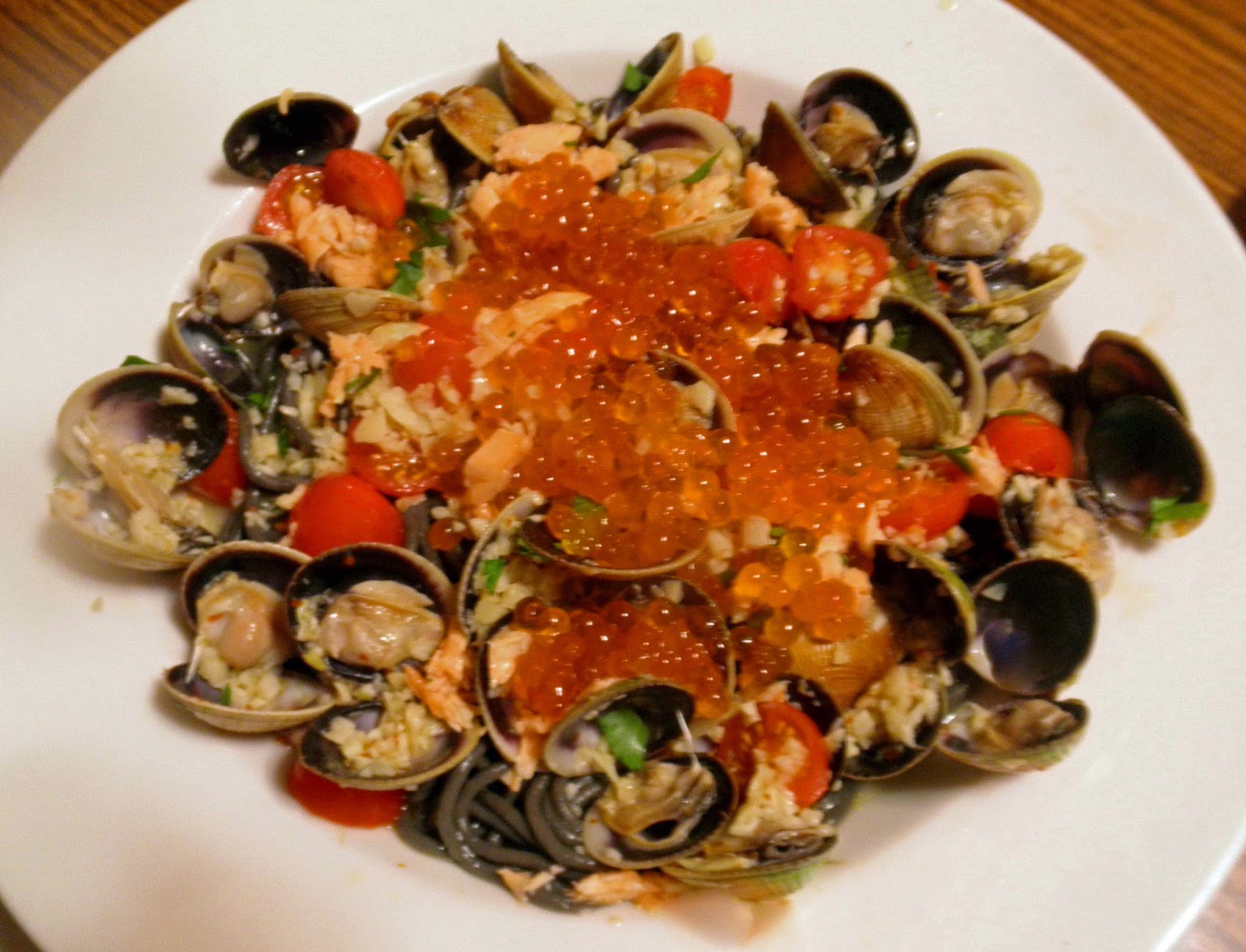This lavender-glazed roasted duck recipe is adapted from Chef Daniel Humm's signature dish that is served at Eleven Madison Park and is published in his cookbook of the same name. Duck is rubbed with lavender honey then coated with a spice mix consisting of Szechuan peppercorns, dried coriander seeds, cumin seeds, and dried lavender buds.
And
for a sauce, I created a blackberry and port wine reduction using thawed,
frozen blackberries and Fonseca Port Bin 27. The blackberries are thawed and drained and
all excess water is removed and then the blackberries are placed into a pan
with the port. The mixture is reduced,
pureed and strained to remove the seeds from the blackberries. The reduction is then placed back into the
pan and unsalted butter is whisked in slowly.
Side
dishes to consider for this are: Roasted
carrots, wild/brown rice, peach confit
Lavender Spice Mix
1/4 cup Szechuan peppercorns
1/4 cup dried coriander seeds
1/8 cup cumin seeds
1/4 cup dried lavender buds
In
a spice grinder, grind the Szechuan peppercorns, dried coriander seeds, and
cumin seeds until roughly ground.
Transfer to a bowl and stir in lavender buds.
Roasted Duck
1
3-pound duck1 cup lavender honey
Lavender Spice Mix
Remove
fat deposits and giblets from duck cavity, reserving liver. Trim excess skin and fat from neck area. Rinse inside and out; pat dry. With a fork, prick holes in duck breast
through the fat, ensuring not to prick through to the meat.
Remove
wing tips. Rub lavender spice mix inside
the duck cavity and put the liver inside the cavity. Truss the duck with butcher's twine. Rub the outside of the duck thoroughly with
lavender honey. Then coat the duck
evenly with Lavender Spice Mix.
Add
a little drizzle of olive oil to bottom of roasting pan, then place duck in the
pan in a 350 degree oven for 20 minutes.
Continue to roast duck at 20-minute intervals turning duck 1/4 turn each
time. Total roasting time is 1 hour and
20 minutes. When done, remove duck from
oven and let it rest for 10-15 minutes before carving. Transfer duck to platter. Remove liver and mash finely in small
bowl. Mashed liver could be served on
baguettes. Serves 2
1/2 cup Fonseca Port Bin 27
2 Tablespoons unsalted butter, cut into quarters
Put blackberries in pan with port. Reduce mixture to 1/2 cup. Puree in food processor. Strain mixture through sieve to remove seeds from blackberries. Return strained sauce to pan on low heat. Slowly mix in the butter, one piece at a time, until blended, and shiny. Keep warm.
Side dishes:
Roasted Carrots: Add peeled carrots to the duck while it is
half-way through the roasting process.
The carrots absorb all of the flavors from the duck fat/juices.Wild and Brown Rice: A mixture of wild and brown rice, cooked separately, always goes well with duck and is a perfect enhancement to the dish.
Peach Confit:
Another adaptation to part of Chef Humm's recipe is peaches that have
been roasted slowly in the oven with a sprinkling of olive oil and lime juice:
For Peach Confit:
2 large peaches1 Tbsp olive oil
1 Tbsp lime juice
Black pepper
Preheat
the oven to 200 degrees F.
Cut
each peach into quarters. Cut each quarter into 3 ½-inch sections. Line a rimmed baking sheet with parchment
paper. Arrange the sliced peach segments on the baking sheet and drizzle olive oil and lime juice on peaches. Sprinkle with pepper. Bake for 45 minutes.






















